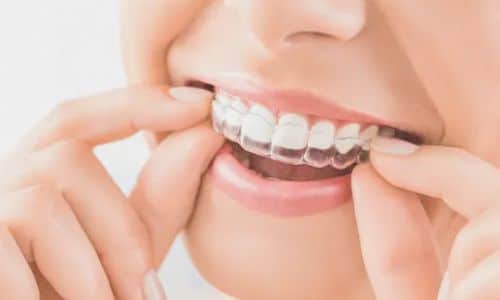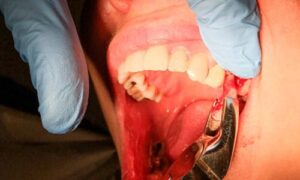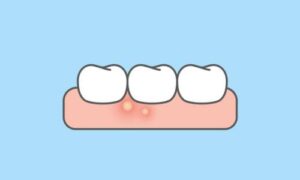For many people, wearing braces conjures images of metal brackets and wires, a less-than-ideal look that can be particularly discouraging for adults. Thankfully, advancements in orthodontic technology have brought us a solution: invisible braces.
These virtual braces offer a discreet and effective way to straighten teeth, perfect for anyone looking to achieve a confident smile without compromising appearance. But with so many different types and brands of braces available, it can be overwhelming to choose the right option. This comprehensive guide provides all the information you need about braces, from how they work to the various types available and the factors to consider when deciding.
What are Invisible Braces?
Clear aligners are a series of custom-made trays that fit snugly over your teeth. These trays are designed to apply gentle pressure, gradually shifting your teeth into their desired positions. Unlike traditional metal braces bonded directly to your teeth, braces are removable, allowing for greater flexibility and ease of use. Invisible braces are made of a clear, BPA-free plastic material that makes them virtually invisible when worn. This means you can straighten your teeth without drawing attention to your orthodontic treatment. Additionally, because they are removable, you can easily take them out to eat, brush, and floss, making maintaining good oral hygiene throughout your treatment easier.
Types of Invisible Braces:
There are two main types:
-
Clear aligners:
These are the most popular types of invisible braces. They are made from a thin, transparent plastic and are virtually invisible when worn. Invisalign is the most well-known brand of clear aligners, but many other companies offer similar products.
-
Lingual braces:
These braces are attached to the back of your teeth, making them completely invisible from the front. Lingual braces are more expensive than clear aligners and may require more adjustments.
Statistics about Invisible Braces
- Global braces market size: Projected to reach USD 14.3 billion by 2030, growing at a CAGR of 23.5% from 2023 to 2030 (Source: Grand View Research)
- According to the ADA, over 6 million people worldwide have been treated with Invisalign, highlighting its widespread acceptance and popularity.
- The global clear aligners market size is projected to reach USD 18.8 billion by 2031, registering a CAGR of 23.1% (2023-2031).
- 1 in 5 orthodontic patients is over the age of eighteen.
- In a study, 49% of people surveyed declared that using Invisalign was much better when eating and chewing than patients who wore normal braces.
- Over 1,000,000 patients worldwide have been treated with Invisalign, and the number is increasing daily.
- The size of the worldwide Orthodontics market achieved USD 7493.98 Million in the year 2022.
- Anticipated expansion at a Compound Annual Growth Rate (CAGR) of 14.19%.
- The global Orthodontics market is projected to attain a valuation of USD 16615.69 Million throughout the forecast period.
Benefits of Invisible Braces:
-
Discreet and virtually invisible:
Invisible braces offer a hidden, almost invisible way to straighten teeth. This is a huge advantage for adults and teenagers self-conscious about their appearance.
-
Removable:
Braces are removable, making them more comfortable to wear and easier to clean. This also allows you to eat and drink without any restrictions. In addition, invisible braces are more comfortable than traditional metal braces as they do not cause irritation or sores in the mouth. Furthermore, invisible braces can effectively correct dental issues like overcrowding, gaps, and misalignment.
-
More comfortable:
Braces are made from a smooth, comfortable plastic material, less likely to irritate your gums and cheeks than traditional metal braces. Additionally, invisible braces are custom-made to fit your teeth perfectly, ensuring a snug and comfortable fit. This reduces the likelihood of discomfort or pain during the treatment process.
-
Faster treatment time:
Invisible braces can sometimes provide shorter treatment times than traditional braces. These braces use advanced technology, such as computer modelling, to plan and accurately predict your teeth’ movement. This allows for more efficient and precise adjustments, resulting in shorter treatment durations. Additionally, braces require fewer visits to the orthodontist for adjustments, saving you time and hassle.
-
Improved oral hygiene:
Braces allow you to brush and floss your teeth more easily than traditional braces, which can help to improve your oral hygiene. This is because invisible braces are removable, allowing you to maintain your regular oral hygiene routine without obstructions. This can prevent plaque and bacteria buildup, reducing the risk of tooth decay and gum disease.
Factors to Consider When Choosing Invisible Braces:
-
Cost:
Invisible braces can be more expensive than traditional ones. The cost will vary depending on the type of invisible braces you choose and the length of your treatment. It is important to consider your budget and insurance coverage when deciding on braces. It would be best if you also thought about the severity of your orthodontic issues and the recommended treatment plan by your orthodontist.
-
The severity of your misalignment:
Invisible braces may not suit everyone, especially those with severe misalignment. Your dentist will be able to assess your individual needs and determine if braces are right for you. In some cases, traditional braces or other orthodontic treatments may be more effective in correcting severe misalignment. It is important to consult your orthodontist thoroughly to discuss all available options and determine the best action for your specific needs.
-
Compliance:
As with any orthodontic treatment, success with invisible braces requires high compliance. You must wear your aligners for the recommended amount each day and switch to new aligners as your dentist prescribes. Failure to comply with these guidelines may result in slower progress or less effective results. Maintaining good oral hygiene during treatment is also important, as braces can make it more difficult to clean your teeth properly. Regular check-ups with your orthodontist will ensure that your treatment progresses as planned and any necessary adjustments can be made.
-
Lifestyle:
Braces are a good option for people on the go, as they are easily removable for meals, snacks, and teeth brushing. However, they may not be suitable for people prone to losing things, as the aligners can be expensive to replace. Additionally, it is important to note that braces may require more discipline and responsibility than traditional braces, as they must be worn for at least 20-22 hours daily to be effective. Therefore, individuals considering invisible braces should carefully evaluate their ability to commit to the treatment plan before deciding.
Conclusion:
Invisible braces offer a discreet and effective way to achieve a confident smile. If you are considering orthodontic treatment, talk to your dentist about whether braces suit you. With the right care and commitment, you can produce a beautiful smile you’ll be proud to show off. Braces provide a convenient option for those who want to straighten their teeth without the noticeable appearance of traditional braces. However, it is important to note that braces may not be suitable for everyone, especially those with severe orthodontic issues. Consulting with a dentist or orthodontist can help determine the best treatment plan for your needs and goals.
Frequently Asked Questions about Invisible Braces:
1: How do invisible braces work?
Invisible braces are a series of custom-made trays that fit snugly over your teeth. They apply gentle pressure to shift your teeth into their desired positions gradually. You wear each set of trays for a specific amount before switching to the next set in the series.
2: How often do I need to wear my invisible braces?
You should wear braces for 20-22 hours daily for optimal results. You can remove them for eating, drinking, brushing, and flossing.
3: How long does treatment with invisible braces take?
Treatment time with these braces varies depending on the severity of your misalignment. However, the average treatment time is 12-18 months.
4: Are invisible braces painful?
You may experience slight discomfort when you first start wearing a new set of aligners. This discomfort is usually mild and goes away within a few days.
5: Can I eat and drink with invisible braces?
No, you should remove your invisible braces before eating or drinking anything besides water. This helps to prevent staining and damage to the aligners.














